Montech have just released their new HyperFlow Digital 360, their first-ever cooler with a screen. It is a successor to the first HyperFlow Cooler they released, called the Montech HyperFlow ARGB 360. We have already reviewed this cooler, and we loved it; it is powerful and has a brilliant price point, all whilst offering colourful visuals.
This HyperFlow Digital 360 was first announced at Computex in 2025, and now it’s available to purchase for your setup. Do you want to know how this cooler performs and compares to other similar coolers on the market? Would you like to see if it is really easy to install and use, without the marketing noise clouding your thoughts? Join us as we walk through our experience using and testing this CPU cooler.
Specification
The HyperFlow Digital comes in four variants: 360mm and 240mm, both available in black or white. It is an All-In-One liquid cooler that uses a pump, radiator, and fans to efficiently manage CPU thermals in any scenario. In this article, we are reviewing the 360mm model. The dimensions of the radiator measure 397mm in length, 120mm in width, and 27mm in height. If you choose this cooler, it is worth bearing in mind that it is best suited for mid-towers and full-towers, with a length of 397mm.

At just 27mm thin, it’s a high-density Reinforced Fin Stack Radiator with 20 Fins Per Inch that delivers powerful and efficient heat dissipation – perfect for builds with little clearance available without sacrificing performance.
There are three pre-installed 120mm E28 ARGB PWM fans, all pre-connected in a daisy-chain configuration for easy installation. They use Fluid Dynamic Bearings, which provide longevity and reduced sound output, making them the typical choice for AIO cooler fans due to these factors. The maximum rotation speed of the fans per minute is 2200, which produces a static pressure of 4.01 mmH2O, placing this cooler in the high-performance range. For comparison, regular case fans typically produce a static pressure of around 2 mmH2O. The higher 4.01 mmH2O is necessary for pushing cool air through the radiator fins for better radiator cooling efficiency, but this will usually mean slightly more noise.
| Key Specs | Montech HyperFlow ARGB 360 (previous model) | Montech HyperFlow Digital 360 |
|---|---|---|
| Colour | Black | White | Black | White |
| Radiator Size | 360mm | 360mm |
| Radiator Dimensions (L x W x H) | 397 x 120 x 27 mm | 397 x 120 x 27 mm |
| Number of Fans | 3 | 3 |
| Bearing Type | Fluid Dynamic | Fluid Dynamic |
| Pump Connector | PWM | PWM 4Pin |
| Max Pump Speed | 3300RPM | 3100RPM |
| Max Fan Speed | 2100RMP | 2200RPM |
| Socket Compatibility | Intel – LGA 115X, 1200, 20XX, 1700, AMD – AM3, AM4, AM5 | Intel – LGA 115X, 1200, 20XX, 1700, 1851 AMD – AM3, AM4, AM5 |
| MSRP | $95.99 | $119.99 |
Buy the Montech HyperFlow ARGB 360 on:
Buy the Montech HyperFlow Digital 360 on:
The pump this cooler uses is PWM and has a maximum operation speed of 3100RPM, meaning that the pump can adjust its rotating speed automatically according to the temperature of your CPU, quite intuitive! When in use, we recorded that the cooler produces a noise level of 42.1dB with all the panels on our chassis.
This cooler offers broad compatibility, supporting AMD sockets from AM3 through AM5, and Intel sockets ranging from LGA 115X up to the latest LGA 1851. Your CPU is bound to be supported unless you are running seriously outdated hardware!
Compared to the HyperFlow ARGB 360, the specs have not changed significantly. Montech was able to tweak the maximum fan speed slightly, so we’ll see if that offers any major performance uplifts in the performance section of this review. This version of the cooler features two additions: a digital screen that replaces the ARGB screen of the previous model, and different fans have been installed. The original fans used were the METAL PRO 12 ARGB fans, and these have been swapped out for the E28 ARGB Performance fans. At a price difference of $25, the question becomes whether these upgrades justify the added cost.
Montech HyperFlow Digital 360 Design
The Montech HyperFlow Digital 360 comes in a pretty standard box, with a picture of the component on the outside and cardboard inserts to hold it in place on the inside. It’s nice to see that Montech have taken a modern and eco-friendly approach to packaging, as some brands are still not doing this currently, like Valkyrie with their V360 LCD CPU Cooler, which uses plastic and polystyrene packaging. In the HyperFlow Digital’s box, you’ll find the cooler itself, an accessories bag, and a user and installation manual – everything you need to get it set up out of the box.
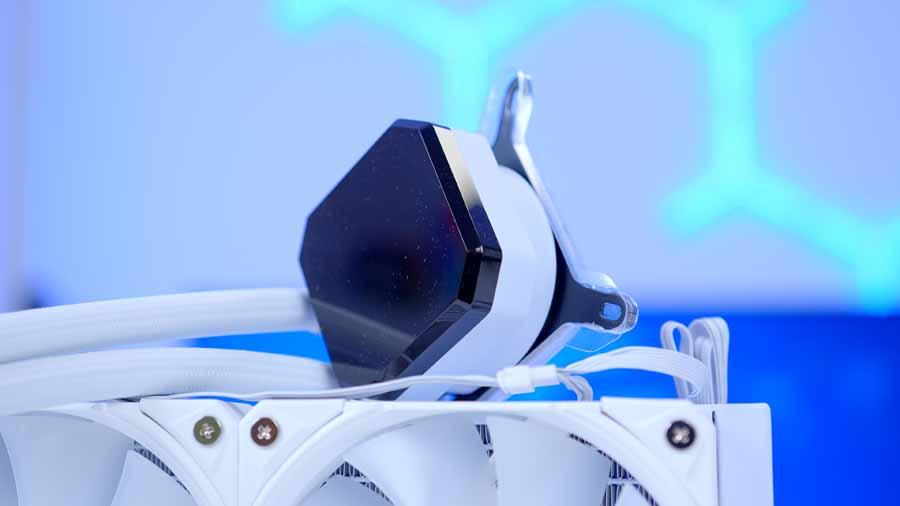
In design, the HyperFlow Digital is your bog-standard AIO; it has an aluminium radiator, three fans, tubing, wiring, a pump and a screen. The pump unit is relatively minimal, with a ring of ARGB lighting around the outer edge. Montech haven’t chosen to push the boundaries of creativity with this cooler; it’s an entry-level cooler with some higher-end specs, allowing you to access some important figures at a glance.
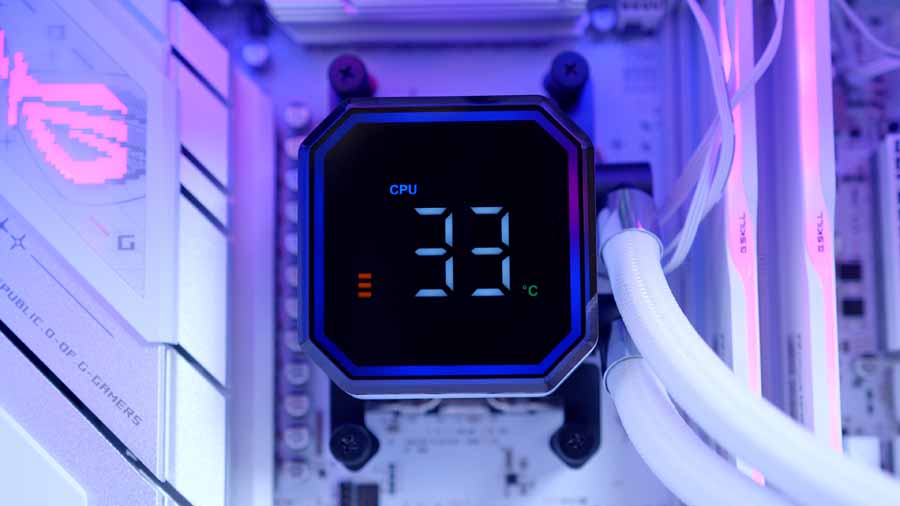
This cooler comes with a screen that displays basic information, including the current temperature for either your CPU or GPU in Fahrenheit or Celsius, depending on your setup. This is altered using an application made by Montech, which is simple and easy to set up. There are no further customisations, and when compared to a less expensive 360mm AIO cooler like the Thermalright Frozen Warframe SE 360 ARGB, which offers similar specs, the display is more customisable. The HyperFlow Digital’s tradeoffs are the slightly higher airflow, slightly higher static pressure, and a more powerful pump.
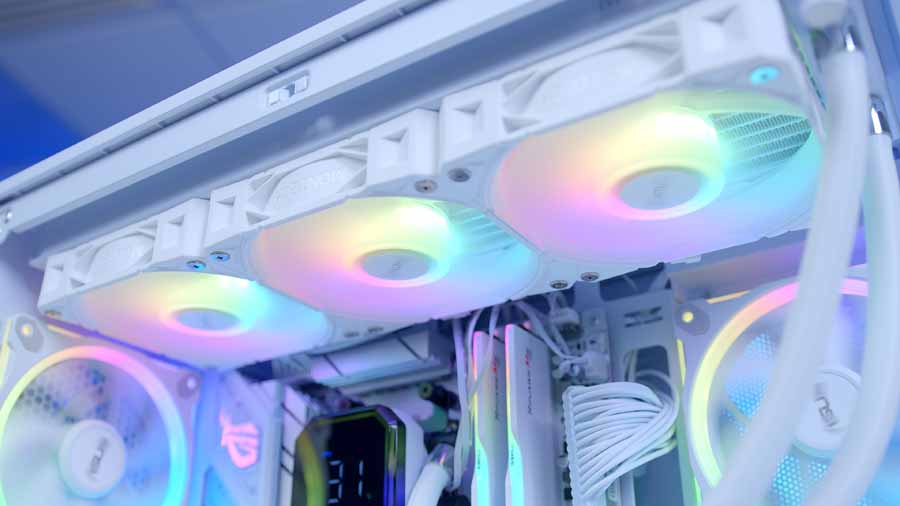
For the overall installation of this cooler, the pre-installed fans can be removed and relocated to the other side, allowing the RGB to be visible from outside the case. If you do choose to alter the configuration of the fans, do be aware that this may affect your overall cooling performance, dependant on fans being in either intake or exhaust configurations. If you plug the ARGB Fan headers into the motherboard or fan controller, you’ll be able to somewhat customise the RGB using your motherboard’s software. For example, with ASUS Aura Sync, the fans will show up as addressable headers. The Montech Hyperflow Digital comes with five cables, which may feel slightly excessive, but the idea is to make the cooler universally functional for motherboards.
Montech HyperFlow Digital 360 Performance
Montech’s application doesn’t offer any cooling-specific personalisations, so we will not be using or taking this into account, as it provides no benefit to the user beyond minimal customisations.
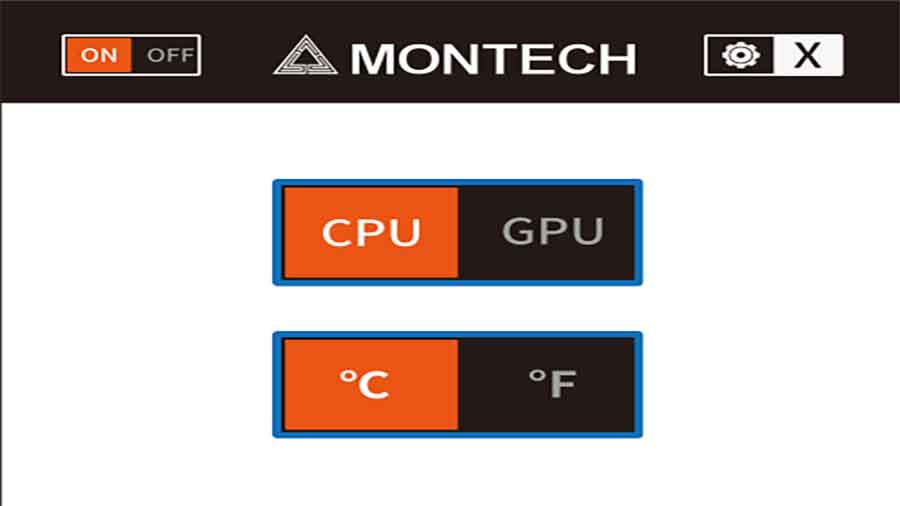
Every CPU cooler we review is thoroughly tested within builds and a series of synthetic benchmarks. This provides performance data for each cooler, showing how it copes with gaming and multi-core workloads. The Intel Core i7-14700K is known to run hot and has a maximum operating temperature of 100℃. This is why our benchmarking system has an Intel Core i7-14700K at its core, with four 140mm fans to maximise airflow. Each cooler is set to the default fan curve within the BIOS, or we use an equivalent fan curve with the cooler’s software, so that testing is fair. All the data we collect is gathered from benchmarks in Cinebench and CPU-Z, with HWMonitor running in the background to record temperature information.
In the three tests that we have conducted, you’ll see a purple and a green set of bars in the bar chart recordings. We have highlighted these two coolers to make it easier to distinguish between the Montech coolers and other 360mm coolers for which we have results. The purple bar is the HyperFlow Digital 360, and the dark green bar is the HyperFlow ARGB 360.
Cinebench 4-Thread
For our first test, we ran a customised 4-thread stress test on the cooler for 10 minutes. We found that, on average, the two coolers ran just as well as each other, maintaining a consistently cool average temperature of around 58℃! This makes the HyperFlow duo the second-best-performing coolers on average, as the ASUS PRIME LC 360 ARGB LCD also gave the same cooling performance on average. For context, the ASUS PRIME LC 360 ARGB LCD retails for $179.99 on Newegg as of September 2025.
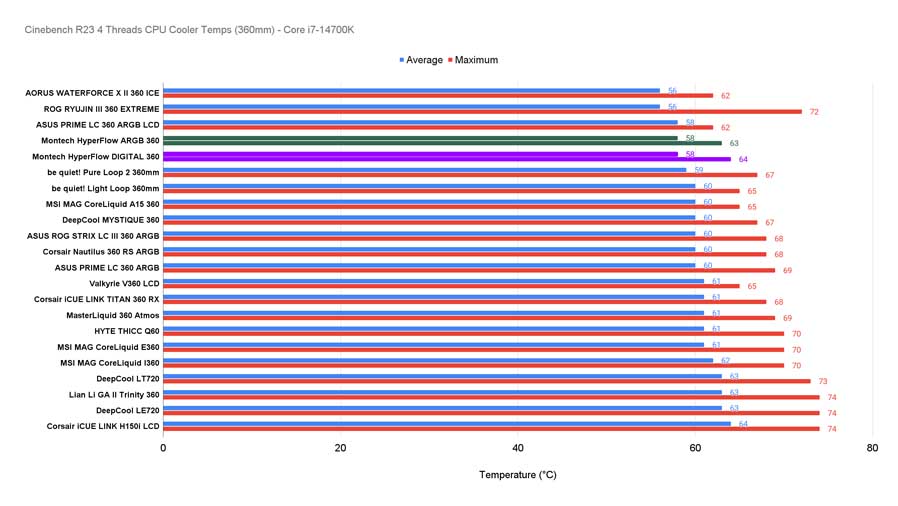
Cinebench 8-Thread
During our Cinebench 8-Thread test, again, we found that the two coolers performed on average at the same level, maintaining a similar temperature. Montech’s HyperFlow Digital performed slightly better, maxing out at a temperature of 75℃, whereas the ARGB model’s temperature was only 1℃ higher at 76℃ max. These are some truly breathtaking benchmark results, yet again, for this mini titan series.
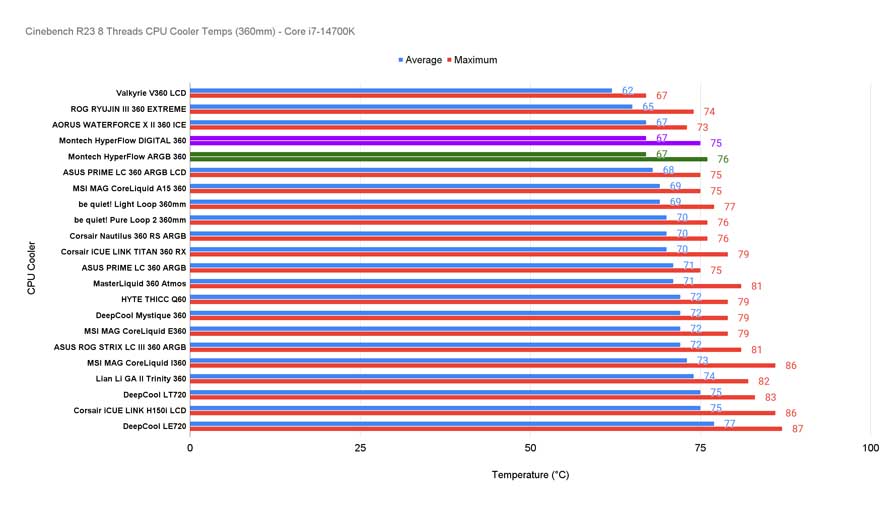
CPU-Z 8-Thread
Lastly, we ran a 10-minute, 8-thread stress test using CPU-Z—our most demanding thermal benchmark. Encouragingly, the newer HyperFlow Digital model edged out the older HyperFlow ARGB version, averaging 68 °C versus the ARGB’s 69 °C. However, the Digital reached a maximum of 75℃. The ARGB only hit a maximum of 72℃, which is lower than the Digital’s highest temperature. I surmise that it is because we don’t have a completely temperature-controlled environment, and this is because we are trying to best replicate the typical user’s setup, so you, yourself, can get a feel for how the cooler will perform at home.
While the temperature delta is modest, it does hint that the updated fan configuration and increased maximum RPM on the Digital variant may be contributing to better thermal handling under sustained CPU load.

The HyperFlow coolers rank among the top-5 highest performing 360mm units we’ve tested. Across all benchmarks, their results were nearly indistinguishable – consistently overlapping and sitting right on top of one another.
Conclusion
Montech Hyperflow Digital 360 Cooler
Product Name: Hyperflow Digital 360
Brand: Montech
-
Features
-
Design
-
Performance
-
Value For Money
Summary
I’m going to be harsh and say that even though this is the first digital CPU cooler Montech has released, it’s not a new idea, and it’s been around for years. Unfortunately, the display implementation here is fairly basic, with the screen limited to just two functions: showing CPU and GPU temperatures. However, the HyperFlow Digital 360 does seem to have directly inherited the engineering behind the HyperFlow ARGB 360’s design, a welcome quality.
As I was researching this cooler, I started to grow a dislike for it, thinking that it wasn’t very appealing visually, but once I had it fitted in a case with the lighting on and the screen working, I had a change of heart. The build quality of the cooler is sturdy and good quality, and it looks so much nicer in a case than I expected. I think the price difference of $25 makes it a justifiable purchase, especially if you are as impressed with the performance results as we are and if you are looking for a cooler with a display.
Where the HyperFlow Digital 360 really shines is in its performance specs. Its fan and pump speeds, ARGB lighting, and mid-range $119.99 MSRP make it a solid option. If you’re looking for an entry-level cooler that performs well, this is a great choice. Nevertheless, if you’re seeking a cooler that offers more features, you’ll need to dig a little deeper into your pockets.
Pros
✅ Beginner-friendly
✅ Software support
✅ Stellar performance overall
Cons
❌ Basic functionality
❌ Basic customisation
❌ No indicative generational performance uplift


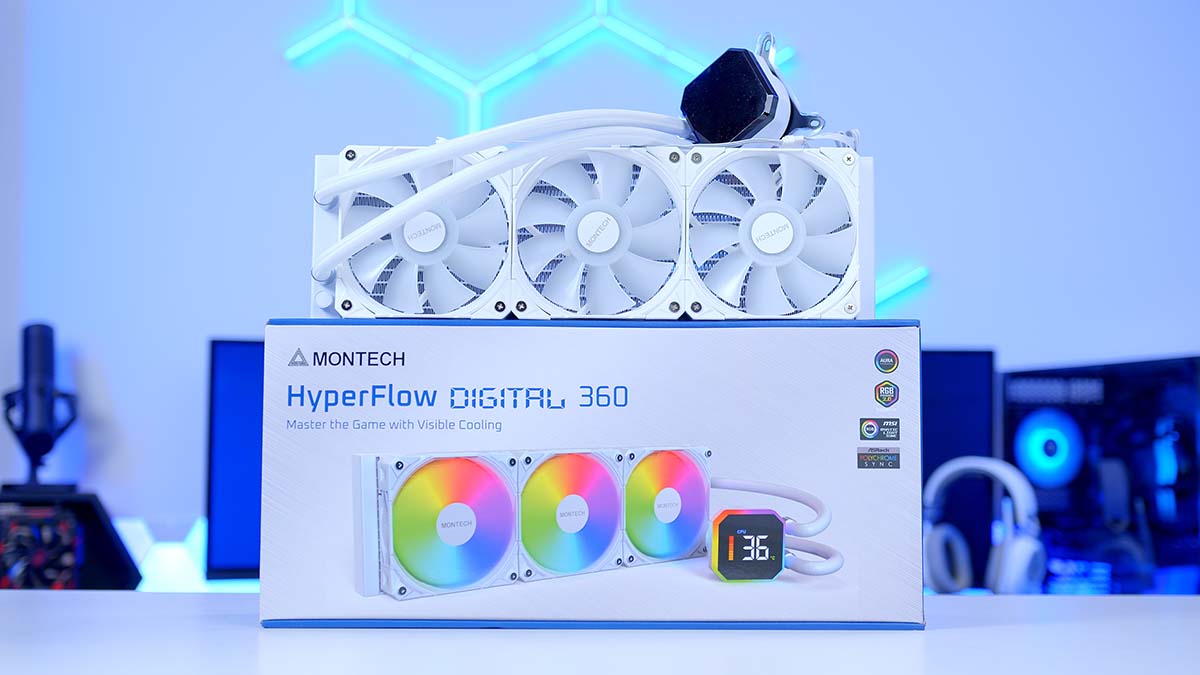
![FI_[DM78] Corsair Air 5400 + 5090 Gaming PC Build](https://geekawhat.com/wp-content/uploads/2025/11/FI_DM78-Corsair-Air-5400-5090-Gaming-PC-Build-551x431.jpg)
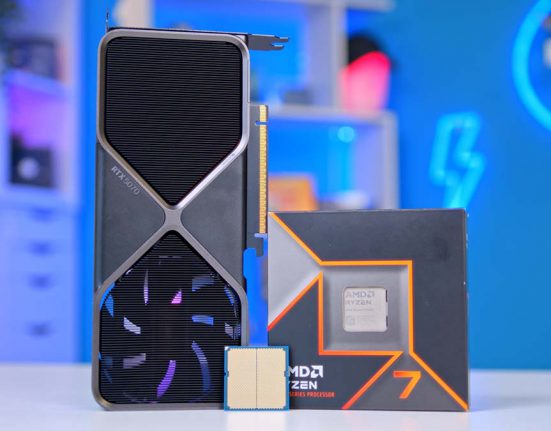
![FI_[DP051] Antec C5 + 5070Ti Gaming PC Build](https://geekawhat.com/wp-content/uploads/2025/11/FI_DP051-Antec-C5-5070Ti-Gaming-PC-Build-551x431.jpg)
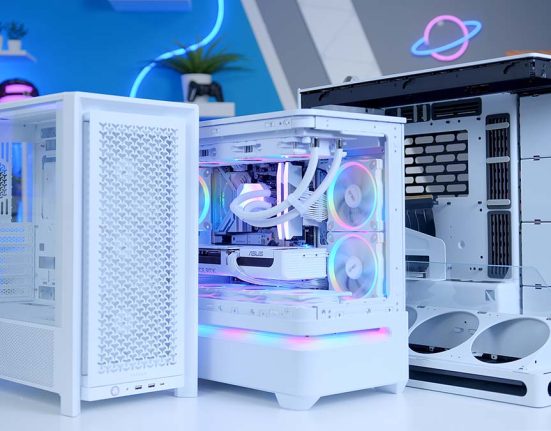
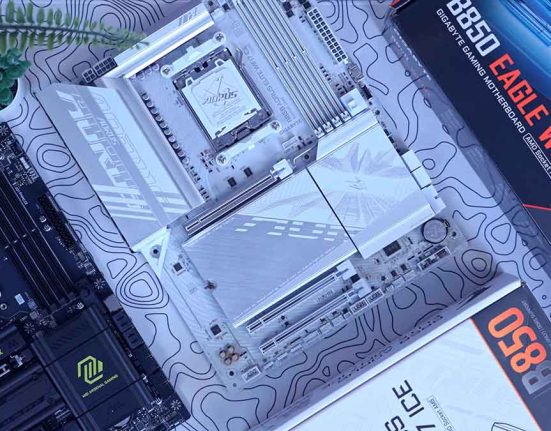
![FI_[SR186] Montech XR Wood + 9060 XT](https://geekawhat.com/wp-content/uploads/2025/10/FI_SR186-Montech-XR-Wood-9060-XT-551x431.jpg)